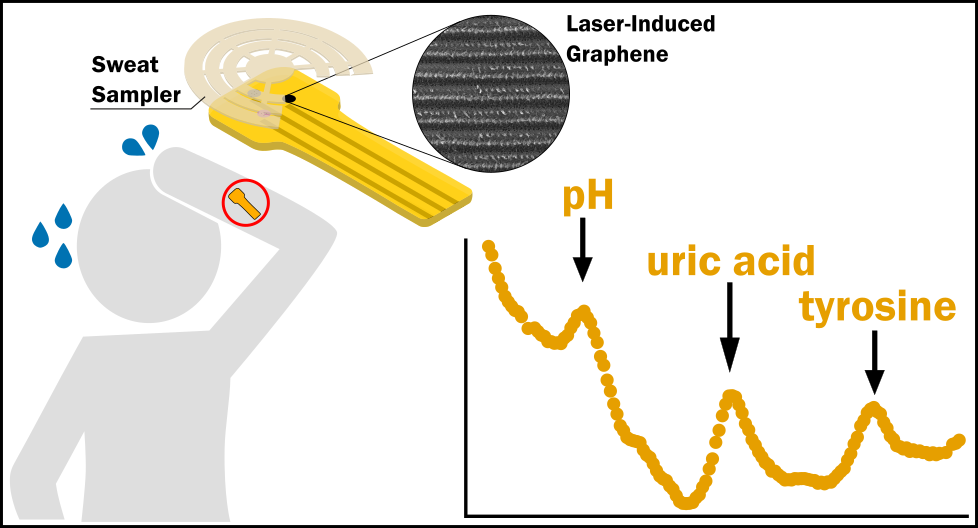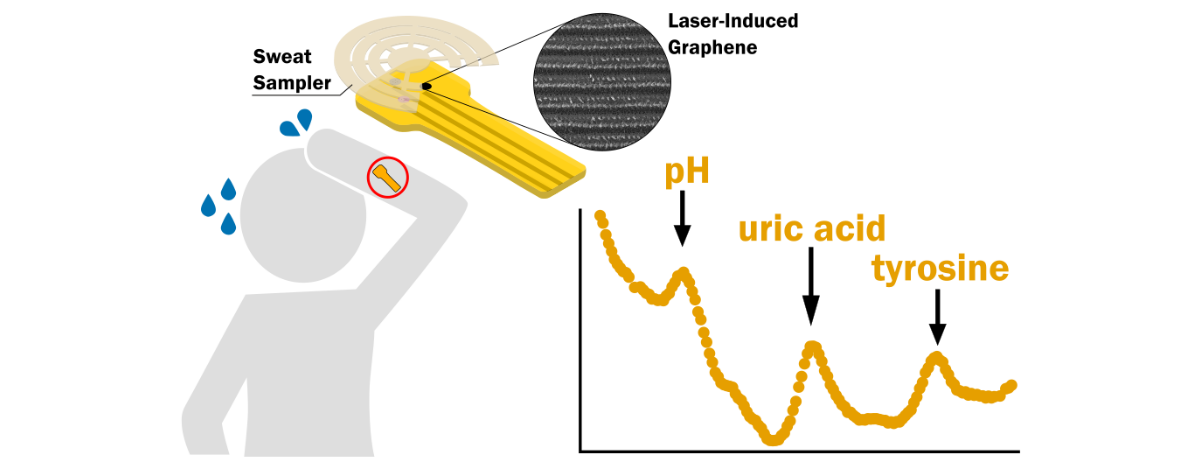AIP SciLight
The latest publication on “Sweat analysis with a wearable sensing platform based on laser-induced graphene” was featured in a AIP SciLight. From the AIP: “A Scilight, a science highlight, briefly summarizes newly published research, emphasizing its significance to a particular field. Scilights are written to ‘intrigue’ a broad scientific audience showcasing what is new and important in the latest research.”
Find the article “Don’t sweat it: laser-induced graphene monitors analytes in sweat ” by Ashley Piccone here: https://aip.scitation.org/doi/10.1063/10.0014459

Vivaldi, F., A. Dallinger, N. Poma, A. Bonini, D. Biagini, P. Salvo, F. Borghi, A. Tavanti, F. Greco, and F. Di Francesco
Publication Date: 19 September 2022
https://doi.org/10.1063/5.0093301

